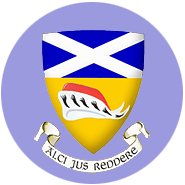
The Baron
In Scotland a barony is an area of land which has been "of New United, Erected, Annexed, Creat and Incorporated ..... into an hail and free Barrony, to be called ... the Barrony of ....... " by the Sovereign in terms of a crown charter or which has been confirmed by the Sovereign in libera baronia, a free-hold barony. This had the effect of erecting possibly dispersed lands into one united barony."Erection is, when lands are not only united in one tenement, but are erected into the dignity of a barony; which comprehendeth lordship, earldom, &c. all which are but more noble titles of a barony, having the like feudal effects".
The lands could be dispersed and even be in different counties or sheriffdoms.
In feudal classification a barony falls into the class of noble as opposed to ignoble feus. A barony therefore conferred on the holder the noble status of "baron". Whether the dignity was that of a barony or of the greater dignity of an earldom, the feudal effects were the same.
It was at the earliest a territorial dignity as distinct from the later personal peerage. Thus when one was divested of an estate the title of honour ceased. The grant was for the lifetime of the holder and could be forfeit if the holder incurred the Crown’s displeasure. The superior required loyal and competent support from his vassal. The Crown reserved the right to repossess the land and might do so if the heir in possession was a child or otherwise unable to provide the feu service or duty. The repossession by the Crown if the heir was a minor was only during minority, and restored on coming of age. Despite emphasis on the military nature of feudalism, an heir could negotiate to avoid the rigours of tenure by redeeming the conditions.
The creation of a barony included the grant of local power and responsibilities to the baron much of which was exercised via the Baron’s Court.